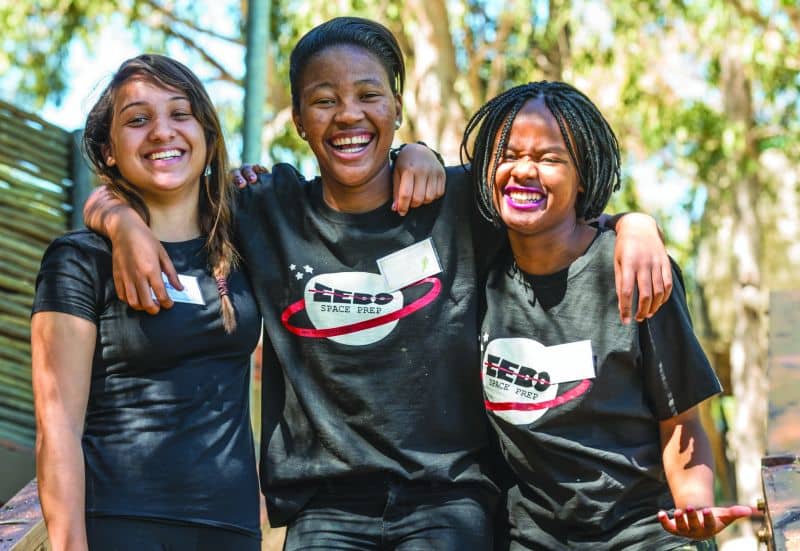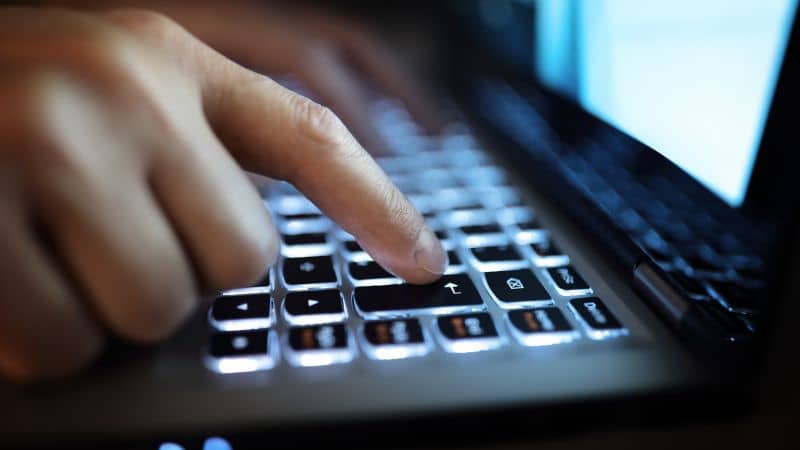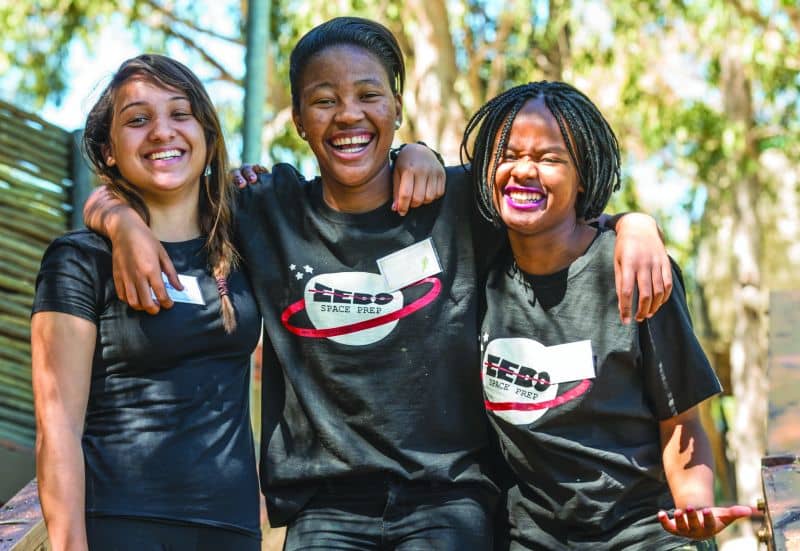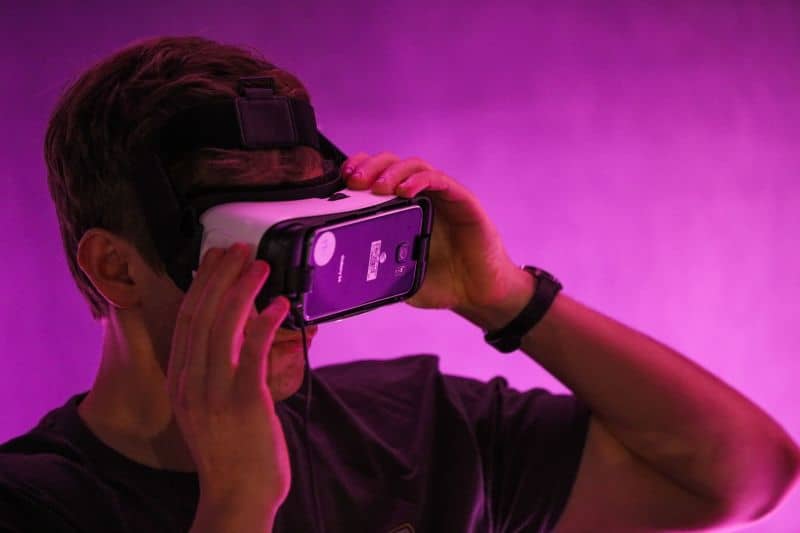Story highlights Africa will launch its first private satellite into space It’s been built by schoolgirls CNN — They may be teenagers, but 17-year-old Brittany Bull and 16-year-old Sesam Mngqengqiswa have grand
Russian gamers race to prevent nuclear ‘war’
Story highlights
Latest craze in Moscow is war game in which players race to find nuclear codes
Russian officials are playing on fears, staging a mass nuclear drill
CNN
—
“Attention! Attention!” blares the Russian voice from a loudspeaker. “The nuclear bombs will be launched in one hour.”
Inside a room styled as a Soviet-era nuclear bunker, a couple of Russians race to prevent a catastrophic strike on the United States.
Their quest – the latest craze in Moscow – is to find the nuclear launch codes and deactivate a hidden red button, which has already been pressed by a mad Russian general.
It’s complete fantasy; just an interactive game hosted in a building in a former industrial area of the city, harking back to the fears of the Cold War.
But amid the current tensions with Russia, in which potential nuclear confrontation with the West has again been raised, it feels a little unsettling.
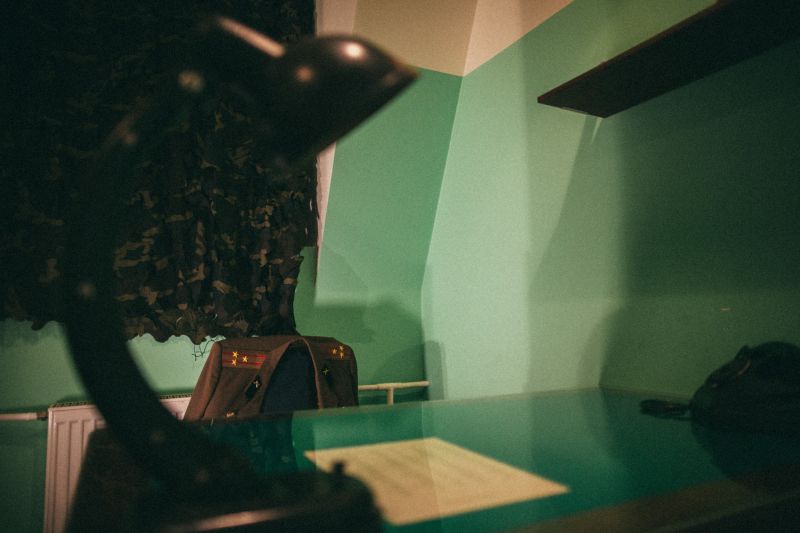
“I’m worried because there is very stupid information from both sides,” said Maxim Motin, a Russian who has just completed the Red Button Quest game.
“I know that normal people all over the world don’t want any war,” he added.
But Russian officials have been preparing the nation for the possibility of conflict, stoking deep-seated concerns about a standoff with the West, Russia’s old Cold War rival.
Russian television has been broadcasting a mass training exercise, involving up to 40 million people across the country. It is designed to prepare responses, the government says, for a chemical or nuclear attack.
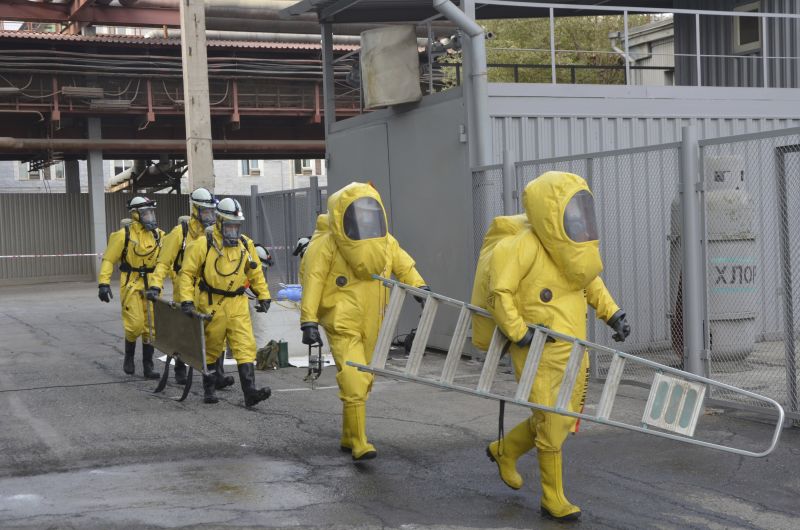
The video shows emergency workers with protective suits and gas masks leading the civil defense rehearsal, the biggest of its kind since the collapse of the Soviet Union. It suggests the Kremlin wants Russians to take the threat of war very seriously.
Of course, all-out conflict between Russia and the West remains highly unlikely.
Analysts say the principle of Mutually Assured Destruction – or MAD – still holds as a deterrent, just as it did during the Cold War.
But with tensions growing over Syria, Ukraine, and the Baltic states, analysts say a small risk of contact, misunderstanding and escalation between the nuclear superpowers has become very real.
“I don’t think nuclear war is likely,” says Fyodor Lukyanov, editor of Russia in Global Affairs, a prominent foreign policy journal.
“But when two nuclear superpowers are operating with their military machines in the same area, very close to each other and they don’t have proper coordination, any unintended thing can happen,” he told CNN.
It is a risk the Kremlin seems keen to play up, with state television upping its hardline rhetoric in recent weeks.
In its flagship current affairs show, Russia’s top state news anchor, Dmitry Kiselyev – dubbed the Kremlin’s propagandist-in-chief by critics – recently issued a stark warning of global war if Russian and US forces clash in Syria.
“Brutish behavior towards Russia could have nuclear dimensions,” he declared.
The Russian defense ministry has also released details of the latest intercontinental ballistic missile being added to its nuclear arsenal.
The Satan 2, as it’s known, will be the world’s most destructive weapon, guaranteeing Russia’s place as a top nuclear power.
It is an apocalyptic vision that adds a further sense of realism to the fantasy quest being acted out by gamers in Moscow.
“I know that now in schools in Russia they tell the children that our main enemy is the US,” said Alisa Sokoleva, another Moscow gamer.
“But it sounds ridiculous to me and I’m totally sure that war is impossible,” she adds.
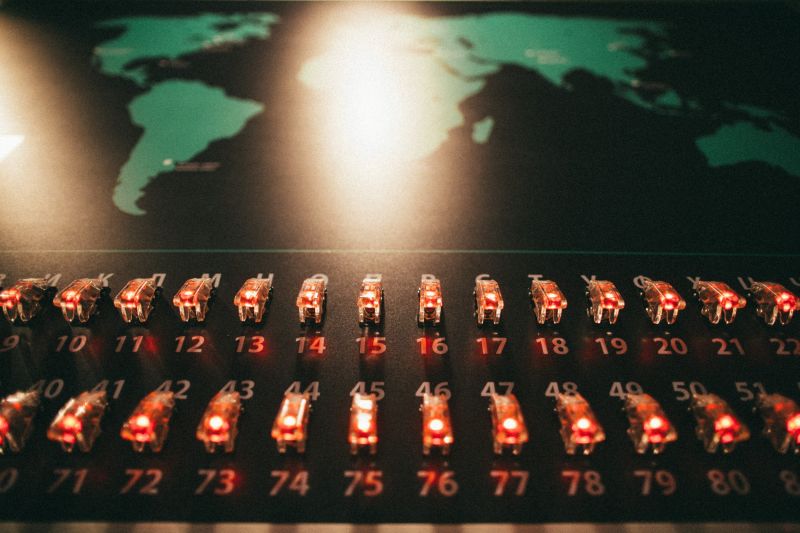
Back in the fake Cold War bunker, the Russian gamers have cracked the launch codes and deactivated the missile launch. The United States, it seems, has again been saved from this virtual Russian nuclear attack.
Hopefully, the real world will be spared such a confrontation too.
Don't Miss
Controversy continues to swirl at Red Bull ahead of 2nd race of F1 season CEO of McLaren Racing Zak Brown
Kyiv, Ukraine CNN — More than 10 million Ukrainians were without power after another wave of Russian strikes on critical
The Baja 1000: An unforgettable race adventure 1,226 miles, over 24 hours, across mountains, coasts and desert into oncoming traffic
Story highlights
Astronauts can temporarily gain 2 inches in height but suffer muscle loss and back pain
More countermeasures involving exercise may help mitigate pain and muscle loss
CNN
—
A six-month stay on the International Space Station can be a pain in the back for astronauts. While they may gain up to 2 inches in height temporarily, that effect is accompanied by a weakening of the muscles supporting the spine, according to a new study.
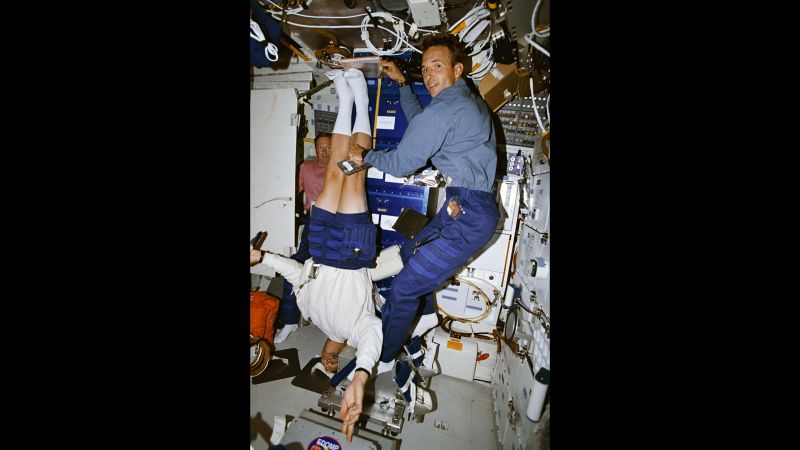
Astronauts have been reporting back pain since the late 1980s, when space missions grew longer. Their flight medical data show that more than half of US astronauts have reported back pain, especially in their lower backs. Up to 28% indicated that it was moderate to severe pain, sometimes lasting the duration of their mission.
Things don’t improve when they return to Earth’s gravity. In the first year after their mission, astronauts have a 4.3 times higher risk of a herniated disc.
“It’s sort of an ongoing problem that has been a significant one with cause for concern,” said Dr. Douglas Chang, first author of the new study and associate professor of orthopedic surgery and chief of physical medicine and rehabilitation service at University of California San Diego Health. “So this study is the first to take it from just an epidemiological description and look at the possible mechanisms for what is going on with the astronauts’ backs.”
Much attention has been focused on intervertebral discs, the spongy shock absorbers that sit between our vertebrae, as the culprit for the back issues that astronauts face. But the new study runs counter to that thinking. In this research, funded by NASA, Chang’s team observed little to no changes in the discs, their height or swelling.
What they did observe in six astronauts who spent four to seven months on the ISS was a tremendous degeneration and atrophying of the supporting musculature in the lumbar (lower) spine, Chang said. These muscles are the ones that help us stay upright, walk and move our upper extremities in an environment like Earth, while protecting discs and ligaments from strain or injury.
In microgravity, the torso lengthens, most likely due to spinal unloading, in which the spinal curvature flattens. Astronauts also aren’t using the muscle tone in their lower backs because they aren’t bending over or using their lower backs to move, like on Earth, Chang said. This is where the pain and stiffening occurs, much like if the astronauts were in a body cast for six months.
MRI scans before and after the missions revealed that the astronauts experienced a 19% decrease in these muscles during their flight. “Even after six weeks of training and reconditioning here one Earth, they are only getting about 68% of their losses restored,” Chang explained.
Chang and his team consider this a serious issue for long-term manned missions, especially when considering a trip to Mars that could take eight or nine months just to reach the Red Planet. That trip, and the astronauts’ potential time spent in Martian gravity – 38% of the surface gravity on Earth – creates the potential for muscle atrophy and deconditioning.
The team’s future research will also look at reported neck issues, where there can be even more occurrences of muscle atrophy and a slower recovery period. They are also hoping to partner with another university on inflight ultrasounds of the spine, to look at what happens to astronauts while they are on the space station.
Because nobody likes back pain and muscle loss, Chang suggested countermeasures that should be added to the already two- to three-hour workout astronauts have on the space station each day. Though their exercise machines focus on a range of issues including cardiovascular and skeletal health, the team believes that space travelers also need to include a core-strenghtening program focused on the spine.
In addition to the “fetal tuck” position astronauts use in microgravity to stretch their lower back or alleviate back pain, Chang suggested yoga. But he knows that is easier said than done.
“A lot of yoga depends on the effects of gravity, like downward dog, where a stretch through the hamstring, calf muscles, back of the neck and shoulders are possible because of gravity. When you remove that, you may not have the same benefit.”
Any machines on the space station also have to be designed with regards to weight, size and even the reverberations they could produce on the station.
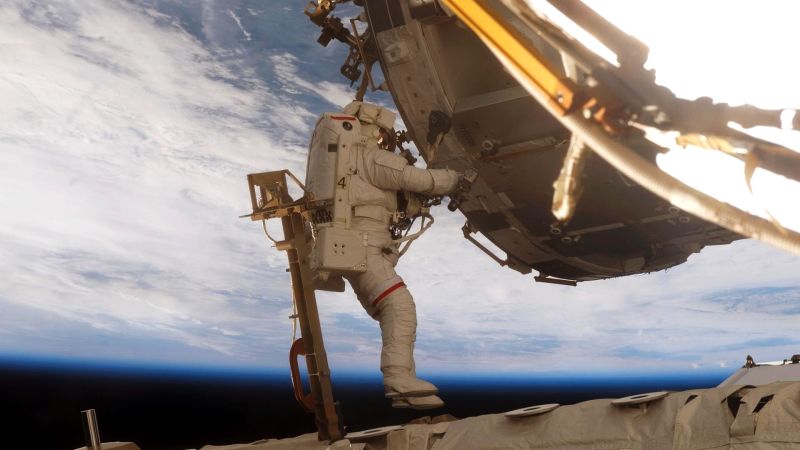
Chang and the other researchers brainstormed with a virtual reality team about different exercise programs that would enable astronauts to invite friends, family or even Twitter followers to join them in a virtual workout, making the daily repetition of their workouts more fun and competitive.
One of Chang’s teammates has felt this pain personally. Dr. Scott Parazynski is the only astronaut to summit Mount Everest. He experienced a herniated disc after returning from the ISS to Earth. Less than a year later, when he attempted to climb Everest the first time, he had to be airlifted off. After a rehabilitation process, he eventually made the summit. Now, he speaks to current astronauts about the ways they can contribute to studies about their health in microgravity.
Join the conversation
Keeping the astronauts healthy and fit is the least they can do, Chang said.
“When a crew comes back, they say on one side of the space station, they see this beautiful blue planet,” he said. “Everything they hold dear to them is on this fragile little planet. And they look out the other window and just see infinity stretching off into the blackness, and they come back with a different sense of themselves and their place in the universe.
“All of them are committed to furthering space knowledge and making incremental steps forward in any way they can for the next crew.”
Don't Miss
CNN — Lionel Messi celebrated his return to Paris Saint-Germain with a goal in his first game back since lifting
Verizon (VZ) is bringing back an unlimited data plan. Starting Monday, Verizon customers can get unlimited data, talk and text
CNN — At the far southwestern tip of England, dangling into the Atlantic, the remote region of Cornwall rarely feels
This NASA astronaut voted from space
Story highlights
Shane Kimbrough is a NASA astronaut
He voted in the 2016 election
CNN
—
From infinity and beyond, he found a way to vote.
Shane Kimbrough, a NASA astronaut currently living on board the International Space Station, filed his ballot in Tuesday’s presidential election, according to a Tumblr post by NASA.
NASA told Yahoo News that Kimbrough filed his ballot in the 2016 election from the space station sometime over the past few days.
For astronauts who will be in space on Election Day, the voting process starts a year before launch. At that time, they are able to select the elections in which they want to participate.
Then, six months before the election, astronauts are provided with the form “Voter Registration and Absentee Ballot Request – Federal Post Card Application.”
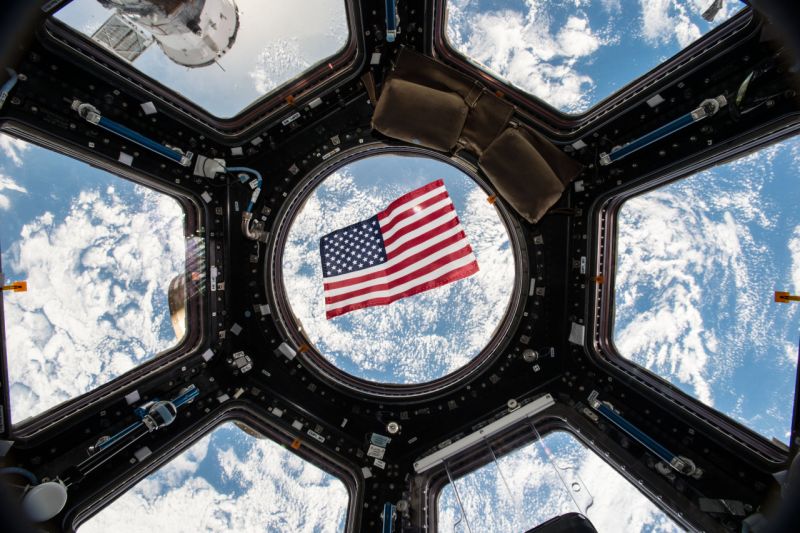
NASA astronaut David Wolf was the first American to vote in space while on the Russian Mir Space Station in a 1997 local election, according to NPR.
Don't Miss
CNN — Hong Kong is widely considered one of the most challenging cities in the world to operate a restaurant
To tackle Thailand’s mounting trash problem, one company is turning to the country’s plant life. Universal Biopack makes packaging that
CNN — Lewis Hamilton may be Formula One’s most successful driver but after securing a record-equaling seventh world title on
What if you could wear a chair?
Story highlights
Japan’s innovative wearable devices includes Archelis, a “standing” chair designed for surgeons.
Tokyo’s first Wearable Expo debuted in 2015 and was largest in the world.
Japan’s wearable tech market is predicted to grow from 530,000 in 2013 to 13.1 million units in 2017.
CNN
—
What do Discman, Tamagotchi, and Game Boy have in common?
They’re all landmark Japanese inventions from the 80s and 90s, symbols of an era when the Asian nation was a world leader in tech innovation.
But with the rise of Silicon Valley, and American tech giants such as Google and Apple, has seen Japan produce less era-defining tech over the past two decades.
That, says Professor Masahiko Tsukamoto, of Kobe University’s Graduate School of Engineering, is about to change thanks to a new generation of young entrepreneurs, an uptick in international collaborations, and new partnerships with university scientists.
Japan’s focus this time around is not on smart phones or gaming, but wearable chairs, smart glasses and dog communication devices.
In short, wacky wearable tech.
In 2013, Japan sold 530,000 units of wearable tech devices, according to Yano Research Institute.
That figure is predicted to leapfrog to 13.1 million units in 2017.
Perhaps the best indication of the boom in this industry was the introduction of Tokyo’s first Wearable Expo in 2015 – at launch, it was the largest wearable tech fair in the world with 103 exhibitors.
It has featured electronic kimonos, cat communication devices, and electronic gloves to record a pianist’s finger work.
At the next show, from January 18 to 20, 2017, the organizers expect more than 200 exhibitors and 19,000 visitors.
“With better functionality, lighter components and smaller designs, wearing devices is now no longer a fantasy,” says show director Yuhi Maezono. “Wearables are gathering attention as the next big growth market.”
Inupathy is a dog harness slated to launch at the end of this year that will allow pet owners to communicate with their dogs.
As well as a heart monitor, the harness features noise-canceling technology which can isolate the animal’s heartbeat and track its reactions to stimulus, such as food, games, people and toys.
With this data, the harness assesses a dog’s mood and changes color to inform the owners.
Equipped with six LED lights, the collar glows blue to show calm, red for excitement, and displays a rainbow theme for happiness.
Joji Yamaguchi, CEO of Inupathy, was inspired by his Corgi, Akane, who was a nervous puppy. To better understand the dog’s anxiety, the biologist developed Inupathy to monitor his heart rate.
“I always felt like I couldn’t understand Akane very well and I wanted to get be closer to him,” says Yamaguchi.
“Buddhism and old Japanese religion says every animals, plants, and even rocks have spirit inside. It’s stressful when you can’t solve problems that are upsetting them.”
Yamaguchi expects wearable wellness tracking will have applications for humans, too.
“Personalization, of artificial intelligence will be a game-changer,” says Yamaguchi.
“For instance, if you show a certain behavior before you start feeling depressed, predicting your depression from that behavior is extremely valuable for an individual. An AI that works personally for you will eventually make this possible.”
Archelis – a wearable chair launched in Japan this year – is also creating a buzz internationally.
A collaboration between Nitto mold factory, Chiba University, Japan Polymer Technology and Hiroaki Nishimura Design, in Japan, it was initially intended for surgeons, who need to rest their legs during long operations.
The chair enables its wearer to effectively sit down and stand up at the same time.
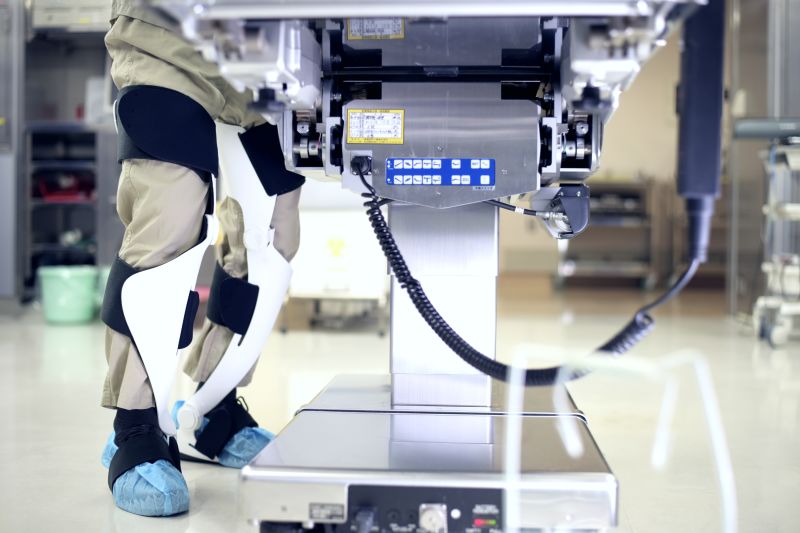
“The Archelis concept is very simple, like the simplicity of Columbus’ egg,” says Dr Hiroshi Kawahira, the surgeon behind the concept. “Long surgeries can result in back pain, neck pain, and knee pain – especially for surgeons who are older.”
Made of 3D-printed panels, Archelis does not require any electrical components or batteries.
The innovation is in the effective design: flexible carbon panels wrap around the buttocks, legs and feet to provide support and minimize pressure on joints.
The system stabilizes the ankles and knees, so the pressure from being upright is spread evenly across the shins and thighs.
Though the wearer appears to be standing, in fact, they are resting their back and legs while working on their feet.
Other wearables are on the smaller side.
Measuring about 3 inches long, BIRD is essentially a modern thimble that turns your fingertip into a magic wand.
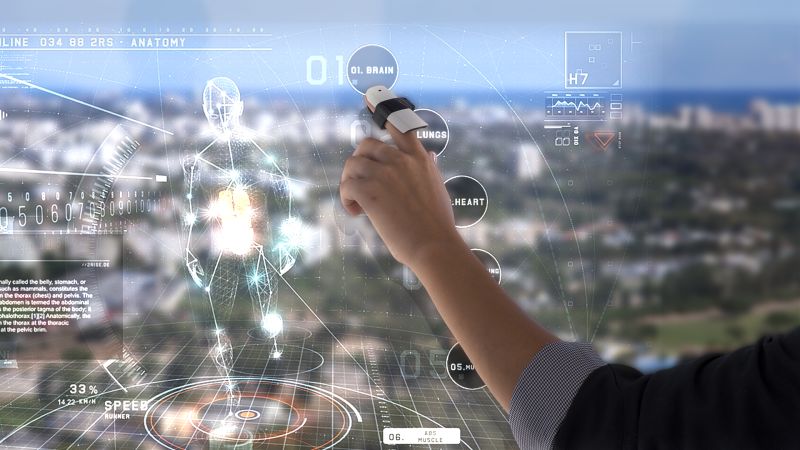
Using algorithms to decode a user’s intent, the device also features precise sensors that track direction, speed, and gestures.
The technology enables users to turn any surface into a smart screen, as well as interact with other smart devices.
Walking around at home, users can project a laptop screen onto a wall, switch on a coffee machine, read on any surface, and make online purchases with the point or swipe of a finger.
The developers – Israel-based MUV Interactive and Japan-based Silicon Technology – expect BIRD to be embraced by the education and corporate sectors, thanks to its ability to create collaborative presentations.
Don't Miss
CNN — Although Nigeria has vast energy reserves, more than 92 million people in the country live without access to
You may have never heard of PFAS, but you likely have these potentially dangerous chemicals inside your body. CNN’s Dr.
New York CNN Business — In a surprise reversal, Qatar announced a ban of alcoholic beer at the eight stadiums

Story highlights
Devices in the bedroom are associated with children losing sleep time and quality, new research says
Even children and teens who don’t stay up late online are losing sleep
CNN
—
These days, teachers often face classrooms filled with yawning students who stayed up late snapping selfies or playing online games.
For children and teens, using cell phones, tablets and computers at night is associated with losing sleep time and sleep quality, new research finds. Even children who don’t use their phones or the other technologies littering their bedrooms at night are losing shut-eye and becoming prone to daylight sleepiness, the analysis published today in JAMA Pediatrics finds.
The analysis found “a consistent pattern of effect across a wide range of countries and settings,” said Dr. Ben Carter, lead author and a senior lecturer in biostatistics at King’s College London.
Carter and his colleagues weeded through the medical literature to identify hundreds of applicable studies conducted between January 1, 2011, and June 15, 2015. They chose 20 research reports involving a total of 125,198 children, evenly divided by gender, with an average age of 14½ years. After extracting pertinent data, Carter and his co-authors performed their own meta-analysis.
Few parents will be surprised by the results: The team found a “strong and consistent association” between bedtime media device use and inadequate sleep quantity, poor sleep quality and excessive daytime sleepiness.
Surprisingly, though, Carter and his team discovered that children who did not use their devices in their bedrooms still had their sleep interrupted and were likely to suffer the same problems. The lights and sounds emitted by the technology, as well as the content itself, may be too stimulating.
Though Carter admits that a weakness of the analysis was “how the data was collected in the primary studies: self-reported by parents and children,” many of us will probably recognize our own families’ habits reflected in the statistics.
A large-scale poll conducted in the United States by the National Sleep Foundation (PDF) reported in 2013 that 72% of all children and 89% of teens have at least one device in their sleep environment. Most of this technology is used near bedtime, that same report found.
According to Carter and his co-authors, this omnipresent technology negatively influences children’s sleep by delaying their sleep time, as they finish watching a movie or play one more game.
Light emitted from these devices may also affect the circadian rhythm, the internal clock timing biological processes, including body temperature and hormone release, the researchers explain. One specific hormone, melatonin, induces tiredness and contributes to the timing of our sleep-wake cycles. Electronic lights can delay the release of melatonin, disrupting this cycle and making it harder to fall asleep.
Carter and his co-authors also suggest that online content may be psychologically stimulating and keep children and teens awake far past the hour when they turn off their devices and try to sleep.
“Sleep is vital for children,” said Dr. Sujay Kansagra, director of the pediatric neurology sleep medicine program at Duke University Medical Center, who was not involved in the new analysis. “We know that sleep plays a crucial role in brain development, memory, self-regulation, attention, immune function, cardiovascular health and much more.”
Kansagra, author of “My Child Won’t Sleep,” noted that the period of greatest brain development is in our first three years of life, which corresponds to when we need and get the most sleep. “It’s hard to believe that this would be a coincidence.”
Kansagra said it’s possible that parents underreported kids using devices at night, but more likely, the technology is simply interfering with sleep hygiene. “For example, children who are allowed to keep devices in their room may be more likely to avoid a good sleep routine, which we know is helpful for sleep,” he said.
Dr. Neil Kline, a representative of the American Sleep Association, agrees that sleep plays an integral role in a child’s healthy development, even though “we don’t know all of the science behind it. There is even some research which demonstrates an association between ADHD and some sleep disorders.”
In many respects, the findings of the new study are no surprise. “Sleep hygiene is being significantly impacted by technology, especially in the teen years,” said Kline, who bases his opinion not only on research but on his own “personal experience and also the anecdotes of many other sleep experts.”
Join the conversation
Sleep hygiene – tips that help facilitate good, continuous and adequate sleep – include having a room that is quiet. “And that would mean removing items that interfere with sleep, including electronics, TV and even pets if they interfere with sleep,” Kline said.
One more important tip comes from the National Sleep Foundation, which recommends at least 30 minutes of “gadget-free transition time” before bedtime. Power down for better sleep.
Other recommendations for good sleep hygiene include not exercising (physically or mentally) too close to bedtime; establishing a regular sleep schedule; limiting exposure to light prior to sleep; avoiding stimulants such as alcohol, caffeine and nicotine in the hours before bedtime; and creating a dark, comfortable and peaceful sleep environment.
Don't Miss
Turn Your Rising Home Equity Into Cash You Can Use Source link
CNN — Just because it’s on the internet doesn’t make it true. It seems so simple, but if everyone knew
Brightest supermoon since 1948
Story highlights
Africa will launch its first private satellite into space
It’s been built by schoolgirls
CNN
—
They may be teenagers, but 17-year-old Brittany Bull and 16-year-old Sesam Mngqengqiswa have grand ambitions – to launch Africa’s first private satellite into space in 2019.
They are part of a team of high school girls from Cape Town, South Africa, who have designed and built payloads for a satellite that will orbit over the earth’s poles scanning Africa’s surface.
Once in space, the satellite will collect information on agriculture, and food security within the continent.
Using the data transmitted, “we can try to determine and predict the problems Africa will be facing in the future”, explains Bull, a student at Pelican Park High School.
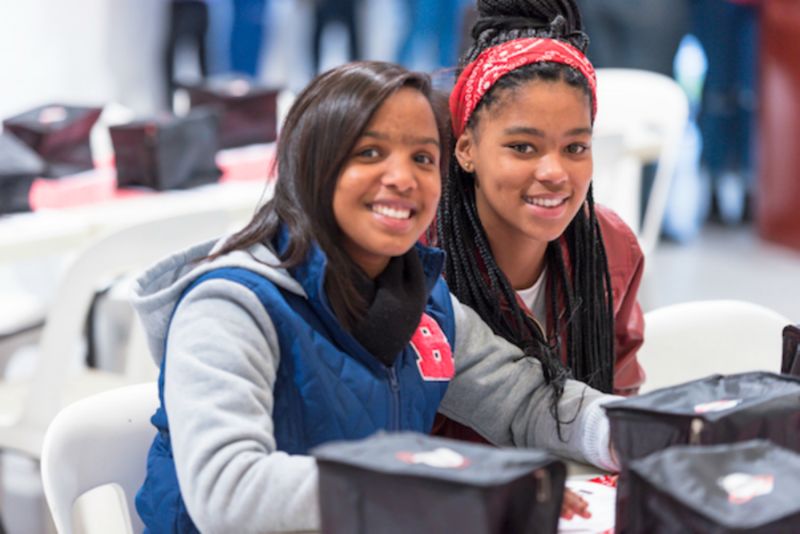
“Where our food is growing, where we can plant more trees and vegetation and also how we can monitor remote areas,” she says. “We have a lot of forest fires and floods but we don’t always get out there in time.”
Information received twice a day will go towards disaster prevention.
It’s part of a project by South Africa’s Meta Economic Development Organization (MEDO) working with Morehead State University in the US.
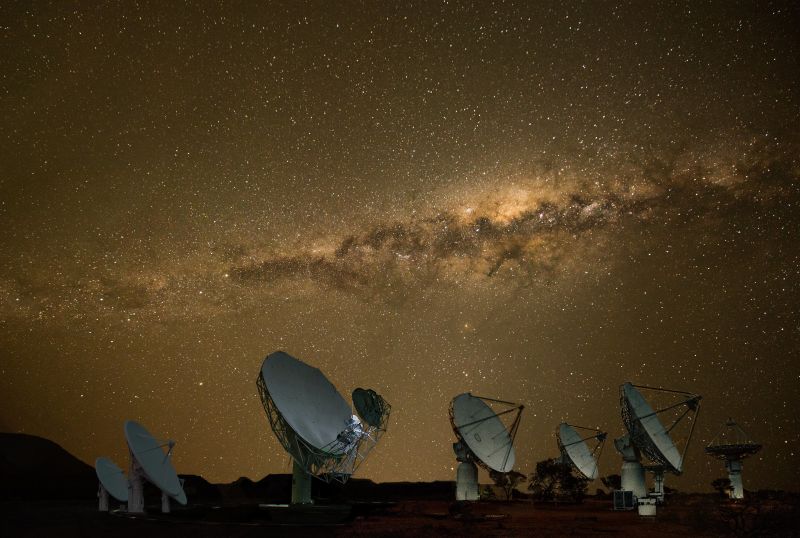
Photos: Africa’s journey to space
Courtesy SKA
Pictured here: a composite image of the MeerKAT and Square Kilometre Array Pathfinder (ASKAP) satellites.

Photos: Africa’s journey to space
Courtesy of SPDO/Swinburne Astronomy Productions
South Africa’s Karoo desert will be home to the Square Kilometer Array, a cluster of 3,000 satellite dishes working in tandem over a square kilometer area.
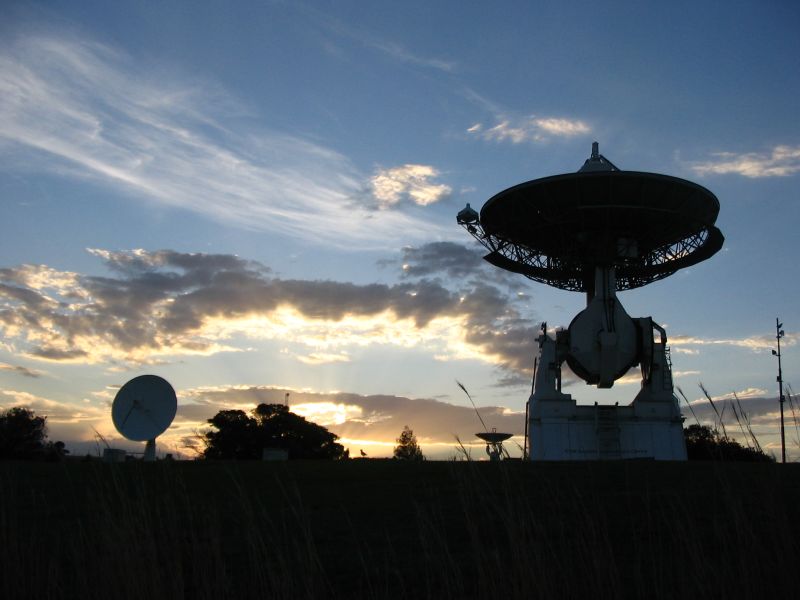
Africa’s participation in the project will be ramped up by distant stations situated in Botswana, Kenya, Madagascar, Mauritius, Mozambique, Namibia and Zambia.” class=”gallery-image__dam-img” height=”1536″/>
Photos: Africa’s journey to space
Courtesy SKA
Africa’s participation in the project will be ramped up by distant stations situated in Botswana, Kenya, Madagascar, Mauritius, Mozambique, Namibia and Zambia.

Photos: Africa’s journey to space
Courtesy of SPDO/Swinburne Astronomy Productions
Scientists hope the project will shed further light on the mysteries posed by the likes of quasars, dark matter and black holes.

Photos: Africa’s journey to space
SKA Africa
Pictured here: the first light images from the MeerKAT. The telescope array currently comprises of 16 dishes that will eventually become a part of the Square Kilometre Array.

Photos: Africa’s journey to space
SKA Africa
More than 1,300 individual objects – galaxies in the distant universe – are seen in this image.
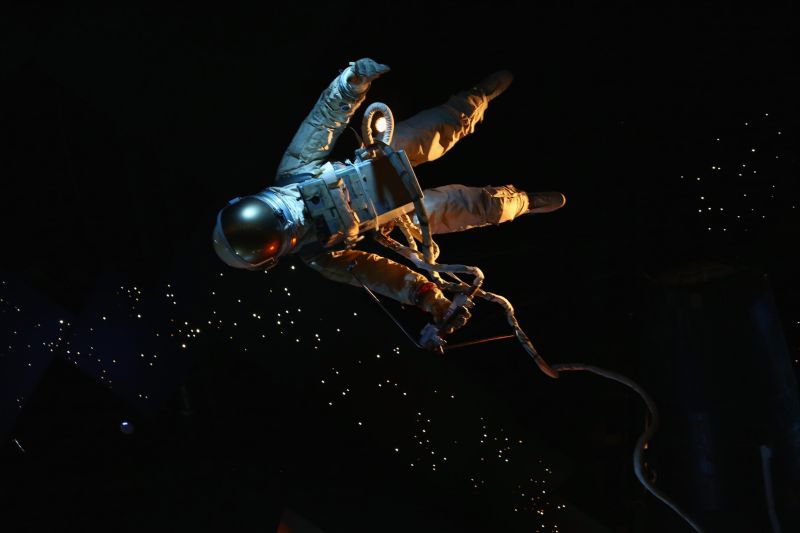
Photos: Africa’s journey to space
Ronald Martinez/Getty Images North America/Getty Images
Photo by Ronald Martinez/Getty Images
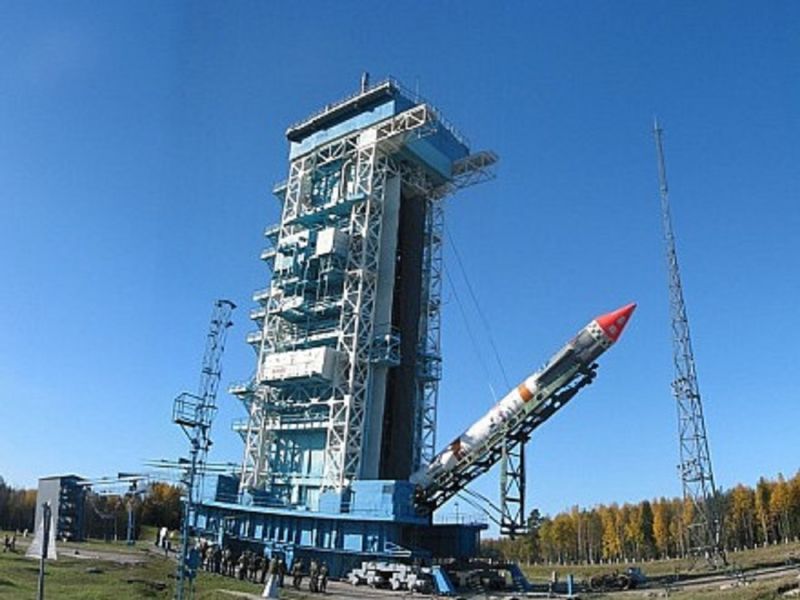
Photos: Africa’s journey to space
SSTL
Nigeria has already launched five satellites into space. The first – NigeriaSat-1 – was launched on a Kosmos-3M rocket from Russia’s Plesetsk spaceport in 2003.
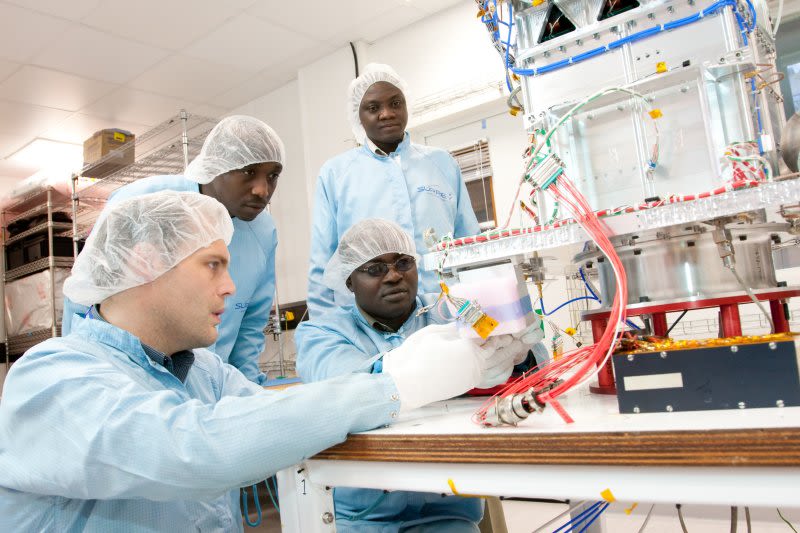
Photos: Africa’s journey to space
SSTL
The Nigerian space agency claims to have trained 300 staff to PhD or BsC level, and has ambitious plans to expand the industry, and encourage space programs across the continent.
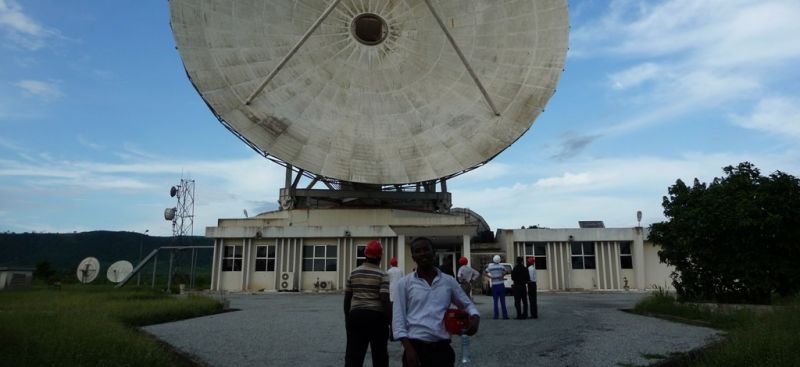
Photos: Africa’s journey to space
GSSTC
Ghana has established a new space center as part of the country’s embrace of advanced technology industries.

Photos: Africa’s journey to space
AFP/Getty Images
Egypt has one of the continent’s oldest space programs, having launched several satellites aboard Russian rockets.
The girls (14 in total) are being trained by satellite engineers from Cape Peninsula University of Technology, in a bid to encourage more African women into STEM (science, technology, engineering, mathematics).
If the launch is successful, it will make MEDO the first private company in Africa to build a satellite and send it into orbit.
“We expect to receive a good signal, which will allow us to receive reliable data,” declares an enthusiastic Mngqengqiswa, of Philippi High School. “In South Africa we have experienced some of the worst floods and droughts and it has really affected the farmers very badly.”
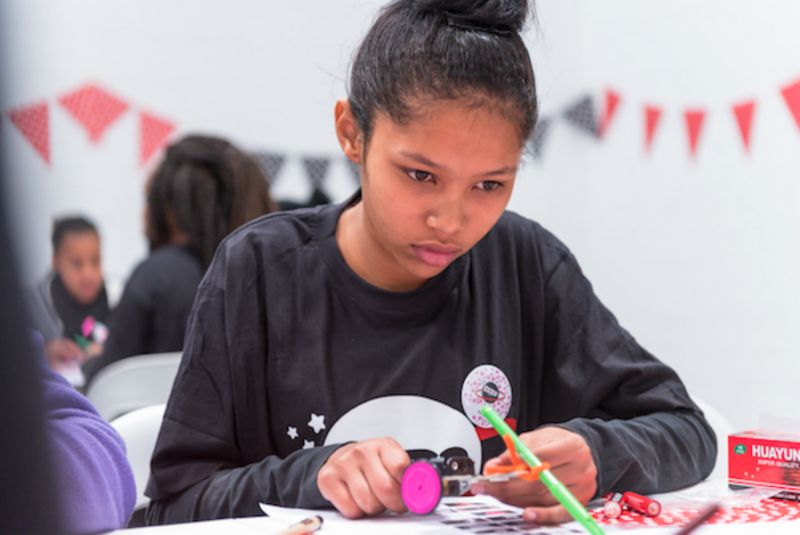
Drought and environmental effects from climate change have continued to plague the country in recent years. An El Niño induced drought led to a shortfall of 9.3 million tons in southern Africa’s April 2016 maize production, according to a UN report.
“It has caused our economy to drop … This is a way of looking at how we can boost our economy,” says the young Mngqengqiswa.
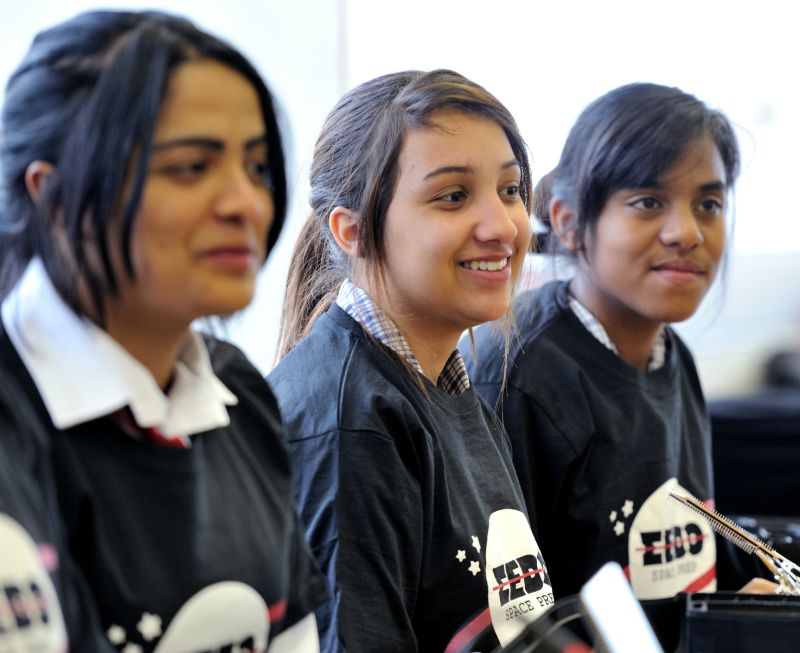
Initial trials involved the girls programming and launching small CricketSat satellites using high-altitude weather balloons, before eventually helping to configure the satellite payloads.
Small format satellites are low cost ways of gathering data on the planet quickly. Tests so far have involved collecting thermal imaging data which is then interpreted for early flood or drought detection.
“It’s a new field for us [in Africa] but I think with it we would be able to make positive changes to our economy,” says Mngqengqiswa.
Ultimately, it is hoped the project will include girls from Namibia, Malawi, Kenya, and Rwanda.
Mngqengqiswa comes from a single parent household. Her mother is a domestic worker. By becoming a space engineer or astronaut, the teenager hopes to make her mother proud.
“Discovering space and seeing the Earth’s atmosphere, it’s not something many black Africans have been able to do, or do not get the opportunity to look at,” says Mngqengqiswa.
The schoolgirl is right; in half a century of space travel, no black African has journeyed to outer space. “I want to see these things for myself,” says Mngqengqiswa, “I want to be able to experience these things.”
Her team mate, Bull agrees: “I want to show to fellow girls that we don’t need to sit around or limit ourselves. Any career is possible – even aerospace.”
Don't Miss
Chris Kirk speaks to CNN after first PGA Tour win in 8 years American golfer Chris Kirk had won four
CNN — Lionel Messi celebrated his return to Paris Saint-Germain with a goal in his first game back since lifting
CNN — At the far southwestern tip of England, dangling into the Atlantic, the remote region of Cornwall rarely feels

Story highlights
Virtual reality headsets range from inexpensive Cardboard to pricey PlayStation
Here are your options if you want to dip your toe in or really swim with the VR big fish
Thinking about treating your family to a little virtual reality this holiday? Have no idea where to start? Don’t worry.
From Google’s inexpensive Cardboard VR viewer to Sony’s new PlayStation VR, this guide will help you figure out what makes sense for your family’s interests, needs, and budget. Here are your options if you want to dip your toe in the water, wade knee-deep, or really swim with the VR big fish.
Keep in mind, virtual reality is a quickly changing technology, so always check out the companies’ websites, professional reviews on sites like CNET, and user reviews before you take the leap.
Virtual reality viewers are inexpensive, handheld devices that offer three-dimensional views and the feeling of being in a different place. The viewers’ lenses work by extending the depth of static images or animation but do not allow you to interact with your environment. To use them, download any app labeled “VR” in either iTunes or Google Play, launch the app, and insert your smartphone into the viewer. Most viewers use your phone’s button or another basic input to control the action.
Key features
• Inexpensive
• Compatible with most smartphones and iOS or Android apps labeled “VR” (except for the View-Master, which uses specially designed apps)
• More like a 3D movie than true VR
• Best for educational content and games
• Selection of high-quality apps is currently fairly limited. Try the New York Times’ VR Virtual Reality Stories and these recommendations.
Products in this category
• Google Cardboard ($14.99)
Literally made of cardboard, this handheld device that you put together yourself is a fun, novel way of experiencing virtual reality. Use with any smartphone and iOS or Android VR apps. Google offers lots of different viewers, including the steampunk-looking Google Tech C-1 Glass VR Viewer ($14.99).
• SmartTheater Virtual Reality Headset ($19.99)
This is a comfortable viewer with adjustable lenses, a head strap, and an easy-to-use trigger input. Comes with a cardboard, handheld motion-controller that adds some oomph to games. Works with most smartphones and any iOS or Android VR apps.
• View-Master Virtual Reality ($29.99)
Geared for learning rather than gaming, the View-Master is available in a range of packages that let you explore dinosaurs, space, wildlife, and more. Each pack includes insertable picture reels (your phone provides the horsepower). Works with most smartphones and specially designed View-Master iOS or Android apps.
Digital tools to turn game-obsessed kids into genuine game designers
Moving up in price and features are VR headsets. They’re similar to viewers in that you download VR apps from the app store and insert your phone in them. Headsets work with the exact same apps as the viewers (except for the Samsung Gear VR and Google Daydream Viewbut give you a more immersive experience.
The advantages of headsets are that they’re more comfortable to wear for a longer time, they fit better (preventing light leaks), they have better lenses, and they often have earphone ports. That’s why some people like to use them to view videos. They don’t make the videos three-dimensional, but they provide a personal-movie-theater-type experience. They also typically have built-in game controllers on the headset itself or work with handheld controllers, giving you more options in apps than you would have with a simple viewer.
Key features
• Pricier than viewers
• Compatible with most smartphones (except the Samsung Gear VR and Google Daydream View) and iOS or Android apps labeled “VR”
• More believable, you-are-there experience, but limited ability to interact with your environment
• Good for games, educational content, and movie viewing
• Selection of high-quality apps is currently fairly limited. Try the New York Times’ VR Virtual Reality Stories and these recommendations.
• Headsets have minimum age requirements set by the manufacturers; check the age before you buy.
Products in this category
• Merge VR Goggles ($79)
This big purple headset is made of flexible foam and has audio ports and dual input buttons for easy game control. Works with most iOS and Android VR apps.
• Google Daydream View ($79; shipping November 2016)
Made of fabric, this lightweight plush headset is designed specifically for Google’s brand-new Daydream VR platform. The platform includes Daydream-compatible phones (such as the company’s Pixel phone), apps, and controllers. Daydream View comes with a controller and the company says there will be 50 apps at launch, including games, educational content, and streaming services.
• Samsung Gear VR ($99)
Designed exclusively for Samsung phones, the Gear VR includes an input pad on the side of the headset and works with bluetooth controllers, both of which let you navigate games easily. Works with Gear VR-compatible games (including Minecraft Gear VR Edition).
• VR Kix Virtual Reality Headset ($49.99)
Individually adjustable lenses, a snug fit, and a smartphone tray you can customize to your phone make the Kix a good option for quality VR on any smartphone. Works with most iOS and Android VR apps.
5 ways video games can help kids with special needs
Right now, the only VR gaming console is offered by Sony. The company’s just-in-time-for-the-holidays PlayStation VR headset works with the PlayStation 4. If you don’t have a PS4 already, you could buy the PlayStation 4 Slim or a PlayStation 4 Pro (also brand-new for the holidays) and the PSVR. The headset plus the horsepower provided by the console provides an immersive, interactive VR experience.
Key features
• Expensive
• Limited to Sony PlayStation
• Totally immersive and interactive; potential for motion sickness
• Games tend to be mature but plentiful, including Batman Arkham VR, 100ft Robot Golf, Final Fantasy XV VR, Battlezone, and Resident Evil 7.
• Sony’s recommended age minimum is 12.
Products in this category
• PlayStation VR Launch Bundle ($499.99)
Includes everything you need to turn your PS4 into a VR machine, including a headset, a camera, two motion controllers, a game, and cables.
• PlayStation 4 Slim ($299.99); PSVR sold separately
A newly redesigned, slimmer version of the PS4, this one has improved graphics, a lighted controller, and runs quieter.
• PlayStation 4 Pro ($399.99); PSVR sold separately
Better graphics, faster action, and optimized to work better with specific “Pro-Enhanced” games
What parents need to know about technology addiction
You may have heard of the ominous-sounding Oculus Rift and HTC Vive. These are the ultra-powerful VR headsets that provide a fully immersive experience; some call it “the Holodeck” in reference to the alternate reality from Star Trek. Both require high-end, powerful PCs (which cost upwards of $500).
Key features
• Super expensive
• Require compatible games (for example, Everest VR is a Vive exclusive) and high-powered computers
• Full interactivity with your environment
• Games tend to be mature, including The Assembly and Deus Ex Mankind Divided.
• Best for families with teens; Oculus Rift’s manufacturer age minimum is 13; Valve states the Vive is “not for children.”
Products in this category
Join the conversation
• HTC Vive ($799)
Offers a “room-scale experience.” If your kids play on the Steam gaming network, they’ve certainly seen ads for the HTC Vive, as it’s made by the same company, Valve, that owns Steam. Steam is offering some Vive-only games designed to take advantage of this headsets’ unique capabilities.
• Oculus Rift ($599)
Comes with everything to make VR a reality – except the computer: a headset, a sensor, a remote, cables, an Xbox controller, and a game.
Don't Miss
You may have never heard of PFAS, but you likely have these potentially dangerous chemicals inside your body. CNN’s Dr.
Story highlights Japan’s innovative wearable devices includes Archelis, a “standing” chair designed for surgeons. Tokyo’s first Wearable Expo debuted in
New York CNN Business — In a surprise reversal, Qatar announced a ban of alcoholic beer at the eight stadiums

